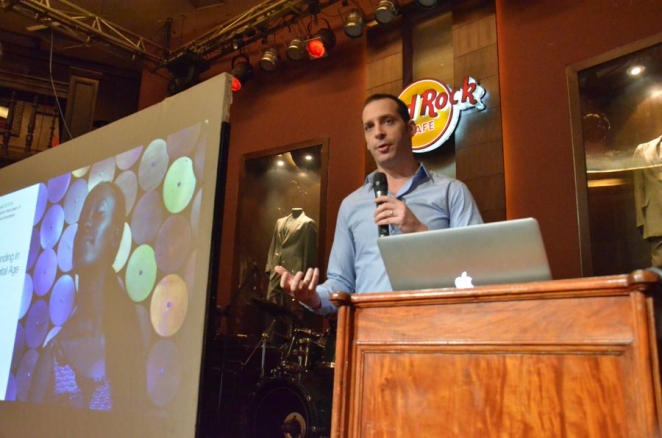
While digital is the current currency of business, at the root of it all the tenets of branding remain the same. Says Bernstein, “Strong brands influence choice, and create loyal customers. Strong brands can command a premium, drive business growth, and deliver financial results. These brands outperform their peers—and in an economic decline strong brands decline slower.”
Bernstein knows his stuff. An 18-year veteran of marketing and branding, Bernstein’s work in branding is across Europe, North America and Asia, so his know-how is not isolated. And, in the digital equation, a global perspective is a necessary factor. With Interbrand, he’s with the creative and strategy teams, bringing his knowledge of cross-cultures into a holistic point-of-view. This is the backbone of building and sustaining cross-cultural brands.
“A brand is a living entity. It is not an ad, not an advertising campaign, not a spokesperson, not a logo, not a name,” he stresses.
What Bernstein is emphasizing is a common acceptance—erroneous perhaps. A brand is defined as noun by: a type of product manufactured by a particular company under a particular name. As a verb, it is to mark, or assign a brand name to.
In creative communications, it is no different. It is necessary for branding to be aligned to its brand promise. And in the age of digital, some rules stay the same—but some have to undergo a bit of rethinking.
Historically, the first age is that of Identity. Branding was the identifier of business. The goals for brands were to be different and easily identified. At its early stage, people started to realize it was more than the mark. Smart use of branding became a way of identification by differentiation.
At this early stage, however, communications between brands and customer was one-way and static. Brands started to use mascots to stress identity, as well. Radio and TV were the standard media, and at the time remained the basis of the measurement of awareness
Says Bernstein of this age of identity, “There was little on what the brand was and how to influence business. People didn’t necessarily know how brands worked.”
Next is the age of value, that of putting a financial number on the brand as a business asset. Brands started to significantly become a business and financial asset. Branding moved from a cost entry, to an investment when it began to grow the business.
“This is where brands were built, and not just the communications. This is the start of the entry of cultural elements. Brands began to create a better understanding of the customer to create reactive, two-way dialogue. Research started becoming a greater role. Understanding the creation of value through the lens of the brand,” explains Bernstein.
Where the age of value started reactive communications, the age of experience went beyond to create moments, memorable times that left an impression. For brand owners, it was now necessary to think of brand experience as collection of many moments linking to the brand.
“As custodians of the brand, we need to understand what impression brands are leaving on customers. From many memories, to just 1 signature moment that signifies the totality of the brand experience.”
Bernstein continues sharing how global brands have redirected digital thinking into the brand experience. One such example is Moleskine’s Café where the customer is at the center of the ecosystem showing signifying the purpose-centricity of the high-end brand. Another is GE’s ecomagination, employing the re-engineering of its total company identity and R&D to transform its corporate business strategy.
“If you talk to millennials, having a sense of purpose, or corporate citizenship, is extremely important, it is their driver of choice. People don’t buy what you do, they buy why you do it,” quotes Bernstein from a Ted Talks video.
Markets are on accelerated shifts. What took 20 years to build, can now just take 2 years, prodding companies to collaborate. “From ladders to lattices, companies have to fundamentally rewire themselves, making themselves flatter for better relationships. Consumers want brands to anticipate and deliver our needs of having living, contextual experiences. Brand experience is about people. The way to translate insights from the numbers is to humanize the data.”
Then there’s the age of you, where people become their own brands, or when people begin to think of themselves as their own brands. This is personalization to the extreme, requiring caution, perhaps? Quotes Bernstein, “Always be in Beta. That’s a Silicon Valley mindset. As brand owners, our responsibility is to make our brands more personal. The brand is business brought to life.”
[nggallery id=514]



